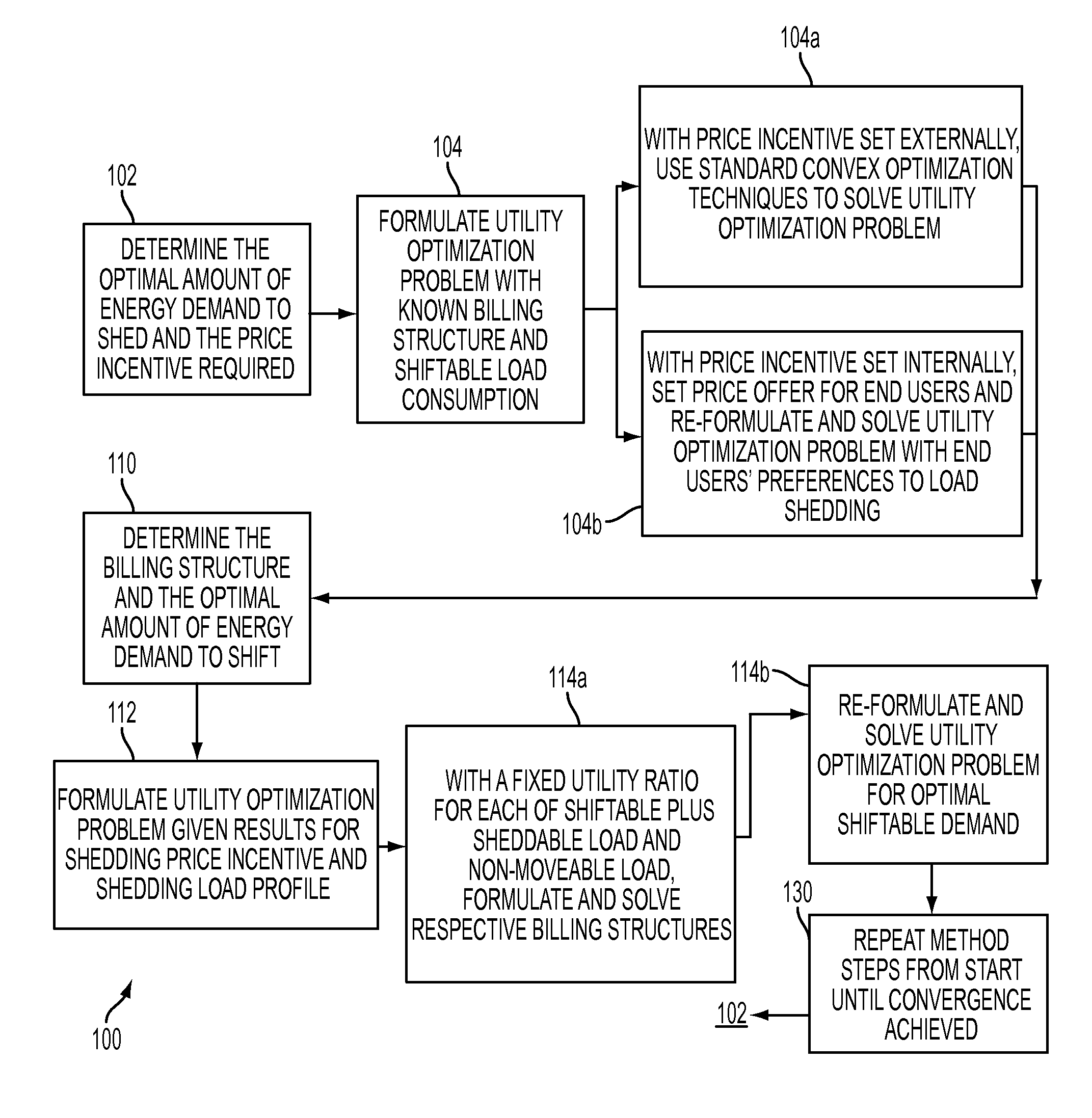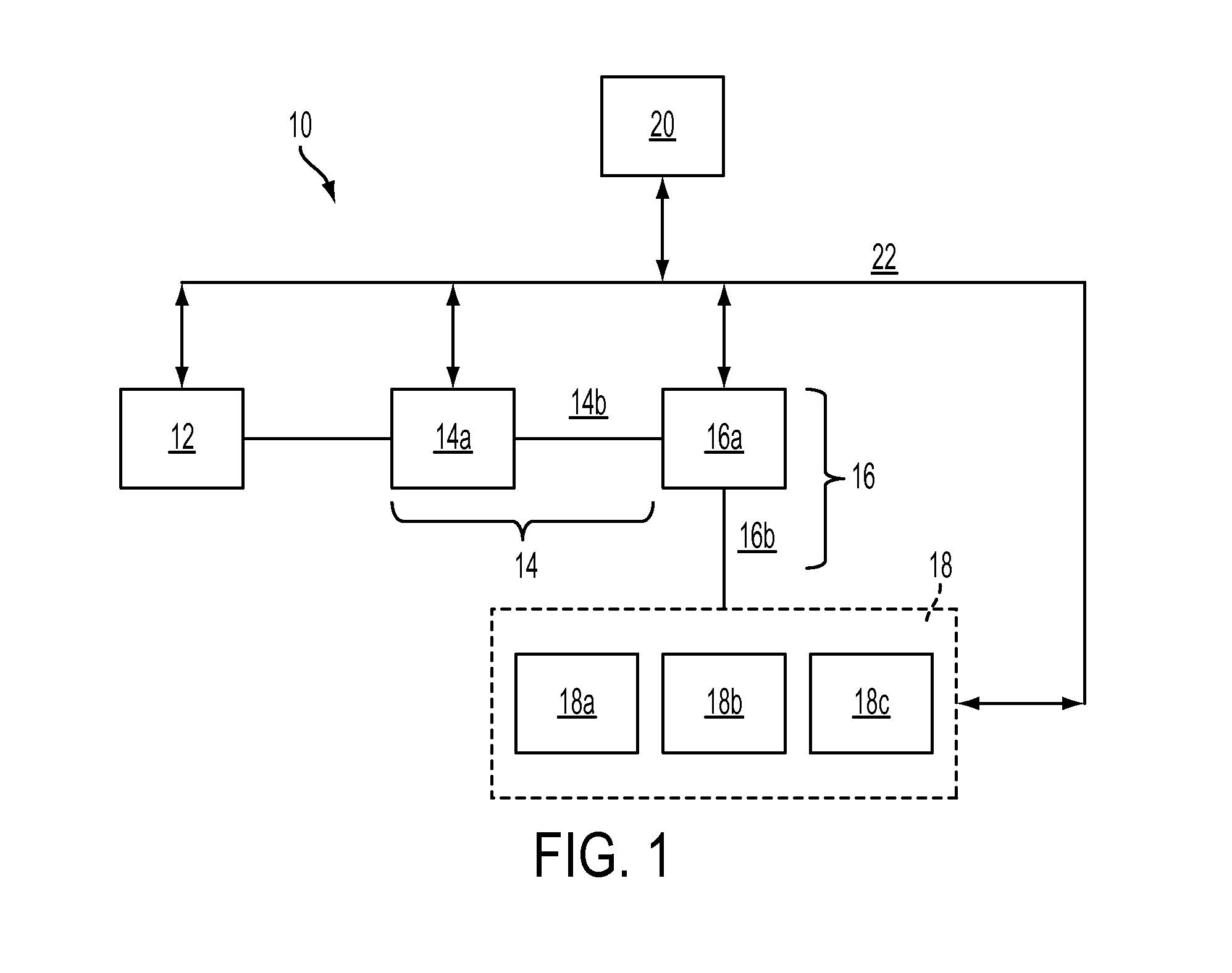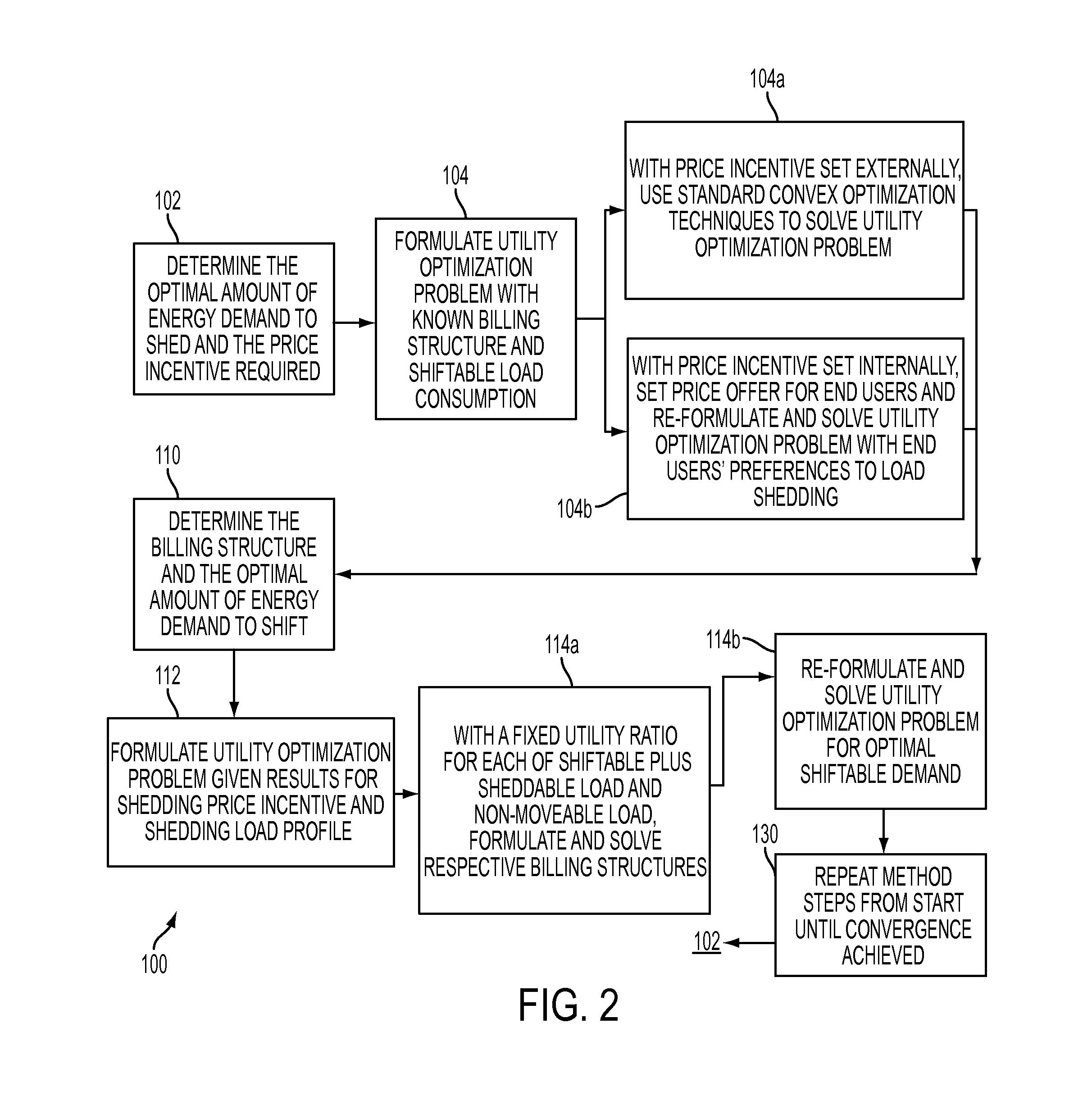Demand shaping in an electrical power grid using day ahead market and real time market prices
a demand shaping and electricity grid technology, applied in adaptive control, process and machine control, instruments, etc., can solve the problems of increasing the cost and complexity of enlarging the grid, introducing new power plants, and reducing the efficiency of the grid, so as to achieve the effect of reducing energy procurement costs and high variability
- Summary
- Abstract
- Description
- Claims
- Application Information
AI Technical Summary
Benefits of technology
Problems solved by technology
Method used
Image
Examples
Embodiment Construction
[0033]FIG. 1 is a block diagram of a typical smart power network 10 (simplified) that operates to provide intelligent control and two-way communication among the various network 10 components. The network 10 comprises a generating station(s) 12 that generates electricity / electrical power from an energy source, such as a renewable source (e.g., water, wind, etc.) or a non-renewable source (e.g., coal, natural gas, etc.). The generating station 12 may be configured in many ways and may utilize a combination of various energy sources. The generating station 12 may also utilize energy that was stored for later use. The network 10 also comprises a transmission system 14 that converts the generated electrical power into high voltage power (via a transmission substation 14a) and transfers the high voltage power over a long distance (via electrical transmission lines 14b) to a distribution system 16. The distribution system 16 (via a power substation 16a) converts the high voltage power int...
PUM
 Login to View More
Login to View More Abstract
Description
Claims
Application Information
 Login to View More
Login to View More - R&D
- Intellectual Property
- Life Sciences
- Materials
- Tech Scout
- Unparalleled Data Quality
- Higher Quality Content
- 60% Fewer Hallucinations
Browse by: Latest US Patents, China's latest patents, Technical Efficacy Thesaurus, Application Domain, Technology Topic, Popular Technical Reports.
© 2025 PatSnap. All rights reserved.Legal|Privacy policy|Modern Slavery Act Transparency Statement|Sitemap|About US| Contact US: help@patsnap.com



